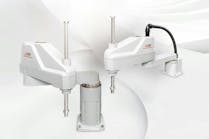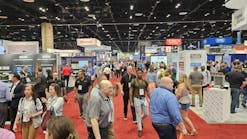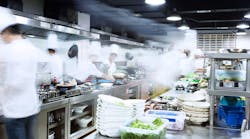Before I get to the topic at hand, I just want to say that for a little more than four years, I’ve had the privilege and pleasure of writing this blog under the tutelage of Scott Arnold, the executive editor of HPAC Engineering. Before that, I had the opportunity—going back to 2009—to work with Scott on several feature articles and commentaries, so we have had a long professional relationship. Not surprisingly, we also have developed a personal relationship over the course of those years (that we are both Pittsburgh Steelers fans didn’t hurt). That’s why I view Scott’s departure from HPAC Engineering at the end of this week with mixed emotions. I’m obviously very excited for him and wish him well as he takes his career to the next level in a new, challenging role. But I will sorely miss his editorial guidance and input in my future writing endeavors. Good luck, and thanks for all your support and encouragement, Scott!
Coincidentally, the topic for this post was suggested by one of Scott’s former HPAC Engineering colleagues, Joe Dahlheimer. As a long-time advocate of demand-controlled ventilation (DCV), I have written and lectured on the topic frequently. However, Joe pointed out to me that I have never written specifically about demand-controlled kitchen ventilation (DCKV). According to the U.S. Environmental Protection Agency, food-preparation operations are among the most energy-intensive for their size, a fact I’ve confirmed. A few years ago, our firm did an energy audit of a six-story, 160,000-sq-ft, owner-occupied office building with a substantial food-service operation. We found the Site Energy Use Intensity (EUIsite) for the building was 91 kBtu per square foot per year and the EUIsite of the kitchen area—exclusive of lighting and normal (non-specialty) plug loads—was 915 kBtu per square foot per year, or 10 times that of the overall building. The high energy consumption in these types of operations is driven by both the food-preparation equipment and the commercial kitchen ventilation (CKV). The exhaust-hood airflow drives the CKV energy consumption, so any reduction of this airflow, without compromising the hood’s ability to remove smoke, vapors, and spillage of convective heat and cooking effluent into the kitchen space, will directly result in energy savings. ASHRAE recommends designing high-efficiency hoods with low capture and containment airflow rates as the first step in reducing CKV energy consumption. The next logical step is to implement DCKV so that airflow—and the attendant makeup air—is significantly reduced during idle cooking times.
There are several commercially available DCKV systems on the market. These generally are controlled by monitoring cooking activity under a hood using temperature, optical, infrared, and/or pressure sensors, either individually or in combination. The fan controls in these systems have evolved from simple two-speed control to adjustable speed control using variable-frequency drives and electronically commutated motors (ECMs). Modern DCKV systems also can provide automatic balancing of multiple exhaust hoods connected to a dedicated fan. A DCKV product I have had the opportunity to evaluate is the Vari-Flow Controls system manufactured and sold by the Accurex unit of Greenheck. That system can provide 2:1 turndown for both hood exhaust and makeup air and comes with an intuitive touchscreen user interface that integrates with open-protocol building-management systems as well as a direct-drive ECM. It uses temperature sensors to monitor cooking activity, but the sensors are located in a capture tank, rather than in the exhaust duct, which, according to Accurex, provides up to 500 percent faster response times.
Look for widespread adoption of DCKV as more states enable codes similar to California’s Title 24 Building Standards Code and restaurants, especially those with higher occupancy loads, move to lower their operating costs.









